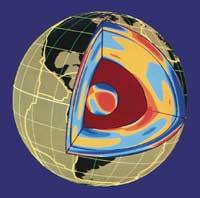Where is the land niobium hidden?
2001/01/05 Carton Virto, Eider - Elhuyar Zientzia
In theory it should be in the mantle, but it seems to be in the nucleus. On the other hand, the researchers have claimed that the German Bayreuth are able to explain the behavior of vanadium, chromium and manganese of the University, which do not always appear where it is expected.

Questions of solubility
Soil origin can be determined by the analysis of component mixtures. In fact, most of the solid soil is made up of a few elements. A nucleus of 5.600 km wide, for example, is iron for the most part. On it stands the mantle, formed mainly by magmas and silicates, and finally the skin.
Some elements have greater solubility in iron than magma. They are called syderophils and it is believed that when the Earth was young and hot they settled in the nucleus. Others are refractory syderophils, for being better dissolved in the irons but in the mantle. To reach these conclusions, they are compared with the composition of rotational meteorites. Although the condrites are as old as the Earth, they are not separated in regions of iron and silicate and, from its composition, an inventory of the elements of the Earth can be made.
The niobium, being a refractory syderophile, should be in the mantle, but it does not exist. For some geochemicals, the bottom of the mantle could be wrapped in an isolated bag, although it is difficult to explain how these warehouses have been formed. Wood and Wad reject this hypothesis and after experimental trials conclude that niobium is not a refractory syderophile, so it is found in the nucleus.

Gai honi buruzko eduki gehiago
Elhuyarrek garatutako teknologia






